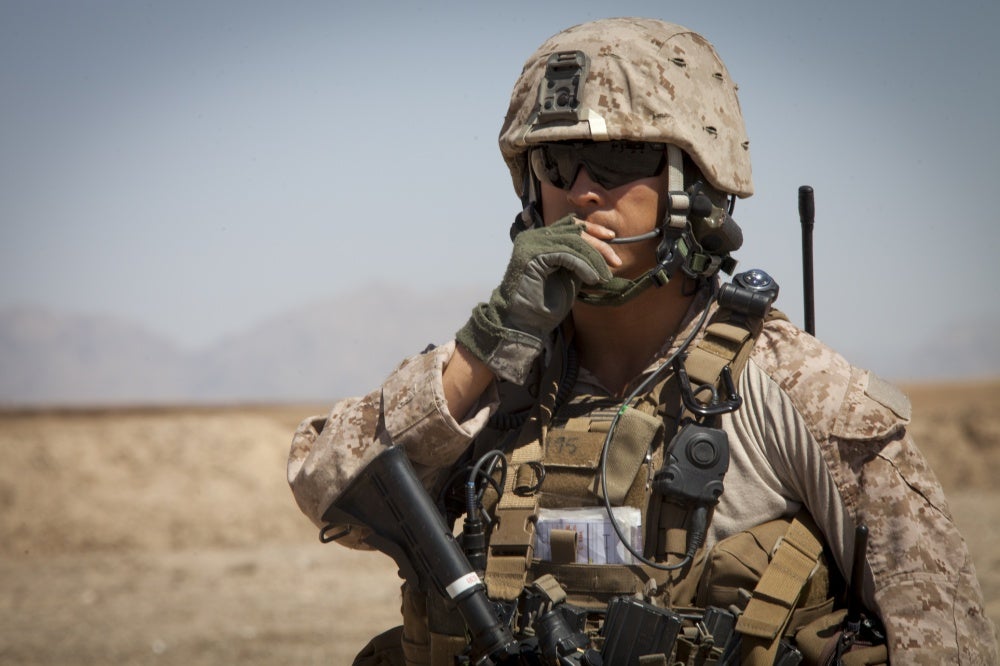
Emerging Technologies in Military Communication
The global tactical military communications market, which comprises airborne, naval, man-portable, vehicular and stationary, is set to see substantial growth over the coming decade. According to market analysis by GlobalData says, by the end of 2028, the sector will be worth $151bn globally. This growth is driven largely by demand for man-portable innovations, which account for more than a third of the market (38%).
The modernisation of man-portable communications systems in particular has long been on the wish lists of armies relying on traditional radio in the field. The US Army, for instance, has been looking to modernise its tactical military communications infrastructure for more than 20 years, starting with the joint tactical radio system (JTRS) in 1997.

Discover B2B Marketing That Performs
Combine business intelligence and editorial excellence to reach engaged professionals across 36 leading media platforms.
“The basic idea was to field a family of radios and waveforms that could be modified by downloading new software rather than replacing expensive hardware,” Loren Thompson, chief executive officer of Source Associates and chief operating officer of the non-profit Lexington Institute wrote for Forbes in 2018. “Software reconfigurability supposedly would enable a patchwork of disparate networks to communicate as if everyone was using an iPhone, even in the midst of combat.”
What if everyone was using an iPhone, though? Experience with smartphones in the military has shown that they can compromise security through features such as geo-location services, which is why the US Army has reportedly prohibited its service personnel from using those services in operational environments.
Smartphones can pose significant security risks for an individual, a squadron and ultimately an operation in a military setting, but they haven’t been written off altogether. As Thompson wrote in Forbes, “when it comes to communicating on the battlefields of tomorrow … everybody in the army seems to agree on what they would like. It’s an iPhone.”
Warfighter Information Network Tactical: the tactical network backbone
While a future military communications network of battlefield-secure smartphones may yet be out of reach, the US Army’s Warfighter Information Network Tactical programme (WIN-T) is the army’s current “tactical network backbone”, according to manufacturer General Dynamics. It offers soldiers secure voice and data communications on the battlefield without the need for fixed infrastructure.

US Tariffs are shifting - will you react or anticipate?
Don’t let policy changes catch you off guard. Stay proactive with real-time data and expert analysis.
By GlobalDataFirst deployed in Iraq in 2004, WIN-T meant soldiers “had a high-speed, interoperable voice and data communications network at the battalion level”, General Dynamics says. It offered soldiers the ability to stream real-time video, view a topographical map of friendly forces, send texts requesting medical assistance, digitally call for artillery support, and access mission command apps like command post of the future and tactical ground reporting system.
The apps meant soldiers could personalise what they were using to achieve their operational objectives. They use the likes of Google Earth, and drag and drop functions to share data with colleagues on the ground and back at command.
Integrating 5G into the defence infrastructure
Meanwhile, the introduction of 5G networks is gathering pace, opening up a new era of possibilities – and threats – for military communications.
Like the roads and skies of the world, communication channels are increasingly populated. Although 5G is the next generation of mobile communications intended to address that, it also means there will be more capacity and therefore greater demand.
While 5Gt offers potential unlike anything before it within the military domain, undoubtedly the biggest single threat it brings is jamming and signal interception. Man-portable radio is set to be the stand-out beneficiary, with the prospect of communications even in the world’s hardest-to-reach environments with the expanded and enhanced spectrum it boasts.
However, with increased capability and capacity comes the obvious test: will it be possible for the military to utilise the network to its full potential given the growing data appetite of the commercial sector? That remains to be seen.
The data war
The battle for data supremacy has already gained pace, with the South China Morning Post recently suggesting the roll-out of 5G could revolutionise military communications, “raising the stakes between those developing the technology”, and ultimately change the warfare and cybersecurity landscape.
Recent legal action taken by the US against one of China’s biggest mobile communications and tech companies, Huawei, and concerns in Europe of the company’s influence prove the growing importance of communications in today’s increasingly technologically advanced climate.
It seems that, since the days of the Iraqi insurgency and Afghanistan conflict, the attention of the world’s militaries and those leading them is shifting back to the more conventional image of war – state on state conflict. Command and control has arguably never been more important, or challenging. Communications has always been the defining factor of conflict, but never more so than today. How countries respond to that challenge will be the determining factor in global influence.





